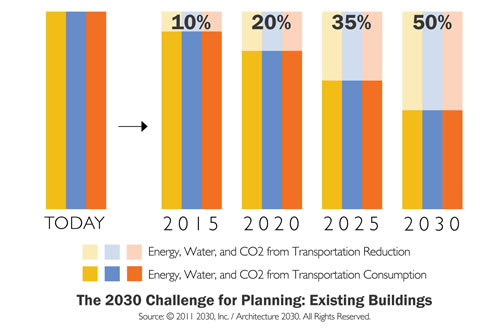A Practical Approach to Climate Change
This Winter Sheena Sharp published another article in the “In Touch” magazine by the REIC (Real Estate Institue of Canada) on “A Practical Approach to Climate Change”. The text is reproduced below.
The Toronto 2030 District is a program created by Architecture 2030, a non-profit think tank looking at how our buildings can meet the challenge of climate change. We need a think tank because we don’t have the answers. We know we have to achieve an 80% reduction in GHG emissions by 2050, but its not at all clear how to get there. We also need strategies for surviving extreme weather events and the ability to return to “normal” as quickly as possible. Our approach is to bring together the many players involved: building owners, property managers, service providers, and community organizations, to share key insights and find a practical way to achieve these goals.
Things that we know for sure:
– Buildings need to transition from gas to electricity for heating because otherwise an 80% reduction in gas use is not possible.
– We will need more clean electricity if we are to use electricity for heat, and conservation measures are the least expensive way of meeting that need.
– Actions like lamp replacement will get us at the most, a 15% reduction in energy use. We need deeper changes.
– Most of the buildings in existence today, will still be in existence by 2050, so existing buildings will be a major focus for the solution. (Consider that none of the cars on the road today, will be on the road in 2050)
In short, this is a colossal task, however, it is not a hopeless task, and there are several promising approaches to be investigated.
The first is that building maintenance is the friend of climate mitigation. Most building owners have reserve funds and have a planning strategy for replacement that covers the next 35 years. In that time our windows, roofs and walls might be refurbished once, and our mechanical systems twice. These are the most expensive elements to upgrade. We need to have an energy plan that is synchronized with the reserve fund, and improves the energy use of building elements as part of the normal repair/replacement cycle.
In suburban areas, and for low/mid-rise buildings, it is possible to offset significant energy use with solar panels. For urban areas with higher densities, district energy systems are showing promise. They generate energy at the most promising locations and share it between all buildings. They also allow excess heat from one building to be transferred to another

